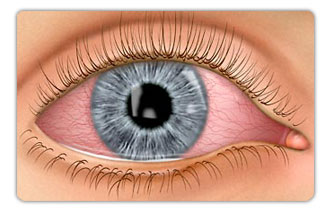What Is Fuchs’ Endothelial Dystrophy and Can It Be Treated?
Fuchs’ endothelial dystrophy is an eye disease in which the innermost layer of cells in the cornea, called endothelium, suffers from degenerative changes (Gary Heiting, 2014). It is the responsibility of the endothelium to maintain proper amount of fluid in the cornea. This allows for better vision because the endothelium keeps the cornea clear by pumping out any excess fluid that could cause corneal swelling. When swelling occurs, blisters can begin to form on the front of the cornea, known as epithelial bullae. If not treated, the can lead to substantial vision loss.
The disease usually affects both eyes and occurs in people over the age of 50 years old. It can be inherited through your parents and yet it can affect those with no medical history of Fuchs’ endothelial dystrophy. For those affected, the vision is deteriorated over time because of swelling, known as corneal edema, and clouding.
Although there is no known prevention for Fuchs’ endothelial dystrophy, this disease can be treated with eye drops when detected in the early stages. Eye drops that contain 5% sodium chloride are used and can improve vision by removing excess water from the cornea. At its later stages, the treatment becomes surgical in the form of a corneal transplant.
Common Symptoms of Fuchs’ Endothelial Dystrophy
• Glare and sensitivity to light
• Eye pain
• Foggy or blurred vision
• Halo vision around lights
• Trouble seeing at night
• Poor vision that may improve later in the day
• Foreign body sensation – a sensation of something in the body
How Does Your Eye Doctor Detect Fuchs’ Endothelial Dystrophy?
First things first, you must schedule an appointment with your eye doctor to receive a comprehensive eye exam. During this eye exam, your ophthalmologist will perform a test using an instrument called a slit lamp. The slit lamp allows your doctor to perform a detailed examination of the cornea. During this procedure, the cornea is examined under high magnification to look for subtle changes in the appearance of cells in the endothelium that are characteristic of the disease (Gary Heiting, 2014). Another test your ophthalmologist might perform is an achymetry, a measurement of your corneal thickness. This helps to detect increased corneal thickness that might indicate corneal swelling from the disease.
If you have any questions about your eye disease, please schedule a visit with Eye Physicians of North Houston at (281) 893-1760 or visit us online for more information at https://www.2920eyephysicians.com/contact.
Works Cited
Gary Heiting, O. (2014, May). Fuchs’ Corneal Dystrophy: 7 Things . Retrieved January 13, 2015, from All About Vision: http://www.allaboutvision.com/conditions/fuchs-corneal-dystrophy.htm

